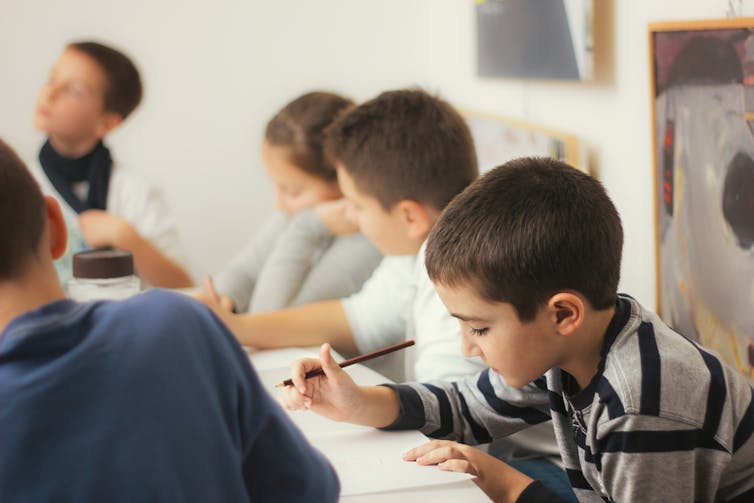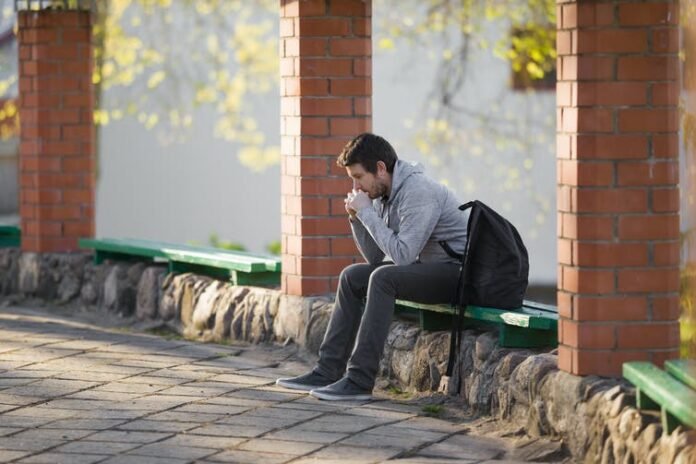
Julie Sonnemann, Grattan Institute and Jordana Hunter, Grattan Institute
School is back for 2021, and some students will get extra help this year. Students who fell behind in their learning during the COVID-19 lockdowns of 2020 will be eligible for extra tutoring in Victoria and New South Wales.
Governments have invested more than half a billion dollars in our two biggest states to help kids bounce back. Data released late last year showed after almost two months of learning from home, NSW students had fallen, on average, three to four months behind in year 3 reading, and two to three months behind in year 5 reading and numeracy. Year 9 students were up to four months behind in numeracy.
Disadvantaged students are likely to have been hardest hit. A Grattan Institute report estimated the achievement gap between disadvantaged students and the rest widens three times more quickly during remote schooling.
Here’s what we know about these new tutoring schemes.
Evidence shows tutoring works
A lot of money has been invested in the new schemes: $250 million in Victoria and $337 million in NSW. They will be rolled out in both primary and secondary schools, and are expected to reach about 200,000 students in Victoria and 290,000 in NSW.
The new programs should be worth it. Evidence from the UK and US suggests a good tutoring program can provide students with around four months of additional learning over one to two school terms.
Read more: What’s the best, most effective way to take notes?
And they can help to close the pre-existing achievement gap for disadvantaged students, which is much greater than the gap caused from the losses during COVID-19 disruptions. In Australia, disadvantaged students from families where parents’ education is low are, on average, about three years behind their more privileged peers by Year 9.
How the new schemes will work
All government schools — and a small number of non-government schools — have been given funding for tutoring, with more money going to disadvantaged schools with many students from low socioeconomic backgrounds.
About one in five students — targeted to those who need it most — will get tutoring.
Small groups of up to five students will work with tutors each week at school. Schools will determine whether sessions are run either in or outside of class time, and in NSW we understand there is a possibility of after-school sessions as well.
Teachers will select the students, which means parents don’t need to think about whether their child needs the tutoring or not.
If parents have concerns about their child either missing out or not wanting to participate, they should discuss this with their school.
How to get the most out of the tutoring program
Teachers will need to accurately identify which students have been struggling and why. They will need to make judgements using a range of assessments, including student tests, classroom observations or student interviews.
Even though teachers make these assessments every day in regular teaching, it is hard to do well. Some teachers will need extra support to do this, such as guidance from expert teachers or assessment specialists. It is a key step to get right.
Next, rigorous selection of tutors, and good training for them, will be key.
Evidence shows intensive tutoring will work best, with short (for example 30 minutes) but regular sessions (between 3-to-5 times a week), over a sustained period (between 10-to-20 weeks).
Close working relationships between tutors and teachers will help ensure students get the support they need.

And perhaps most importantly, the quality of the teaching by the teacher and tutor will be critical. Teachers are likely to be swamped this year, and education departments should provide extra support to help teachers guide tutors as needed.
Guidance could include information on structured literacy and numeracy programs to help teachers and tutors adopt good practice, especially for students who have complex learning needs.
Programs include well-specified training, materials and teaching approaches. For literacy, for example, these programs can provide extra support on proven ways of teaching oral language skills or certain aspects of reading.
Read more: Should school uniforms be compulsory? We asked five experts
Education departments will need to keep an eye on the quality of candidates coming forward for tutoring roles, given a big workforce is being recruited fast with tight constraints on who can apply. If the pool of tutor candidates needs to be made bigger, evidence shows university graduates from a range of fields, not just education, can be good tutors too.
Schools will also need to take care to ensure students do not feel stigma about being identified for tutoring. Teachers will need to pay attention to student confidence, and avoid negative messaging or separating students on an ongoing basis, which can have negative impacts (also known as streaming).
Parents can explain to their child that extra tutoring support will help them catch up and feel more confident at school.
The tutoring schemes are an opportunity for governments to learn
The NSW and Victorian governments have taken on a mammoth task. Almost 10,000 tutors will be mobilised at short notice. And there are still many aspects of the tutoring program design where the evidence is not clear, such as around the exact nature of tutoring training.
It will not be a failure if some of the programs don’t work well. But it will be a problem if we don’t learn why.
Australia now has an opportunity to trial a promising initiative and to understand how it can work best. The tutoring schemes of the 2021 school year should be rigorously evaluated. Where possible, education departments should also run small-scale trials which test different tutoring approaches.
South Australia has also announced a small ($3.6 million) maths tutoring program, which provides a good opportunity for teachers to compare the tuition approaches in different states.
Julie Sonnemann, Fellow, School Education, Grattan Institute and Jordana Hunter, Program Director, School Education Program, Grattan Institute
This article is republished from The Conversation under a Creative Commons license. Read the original article.





